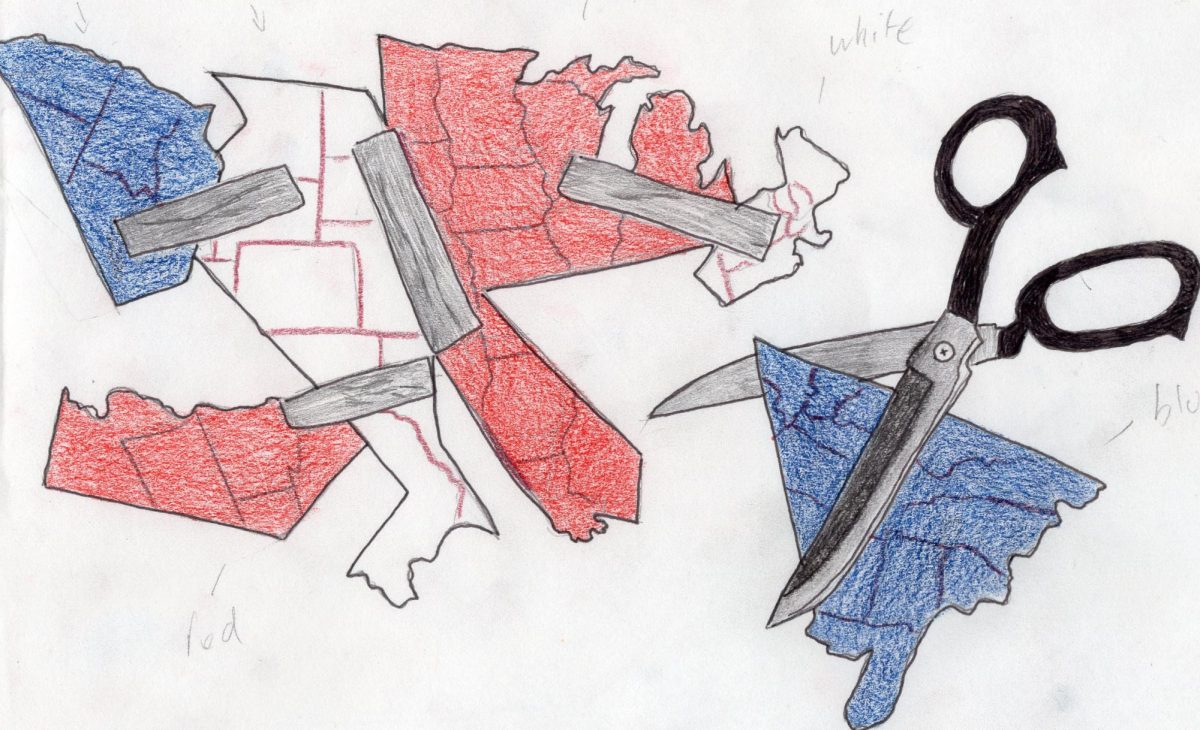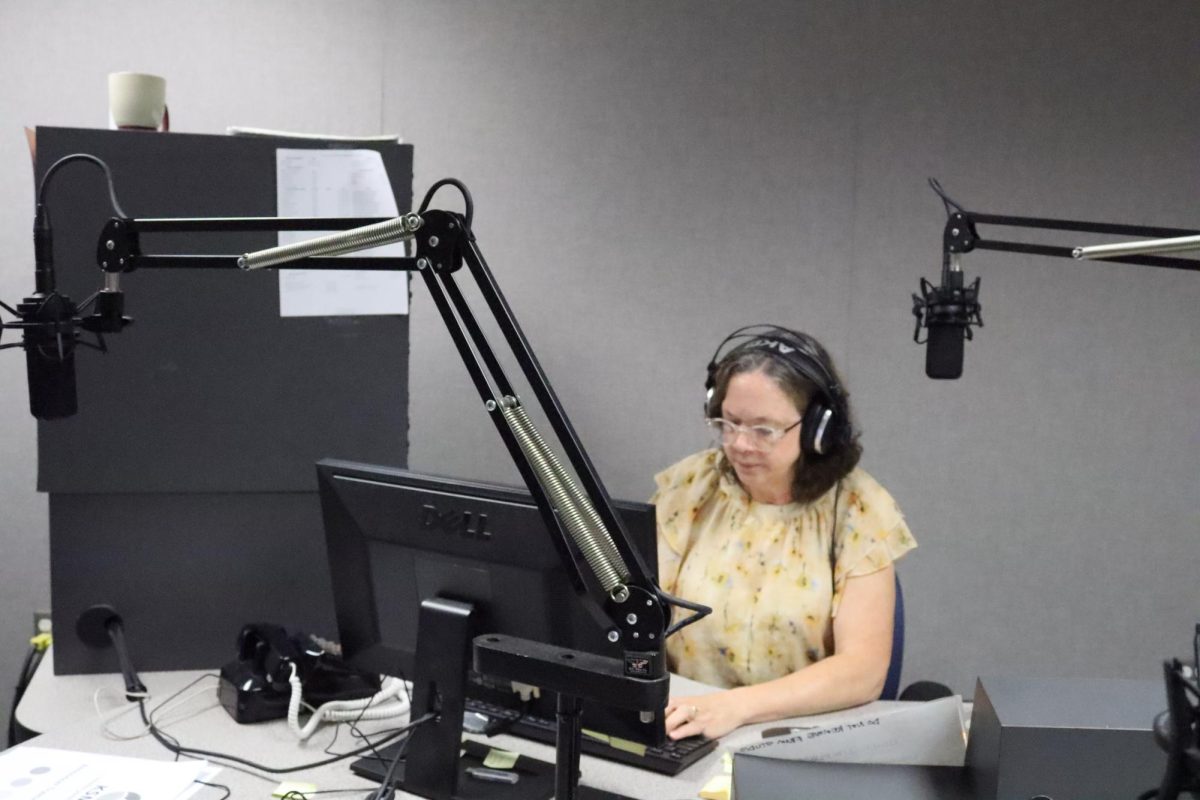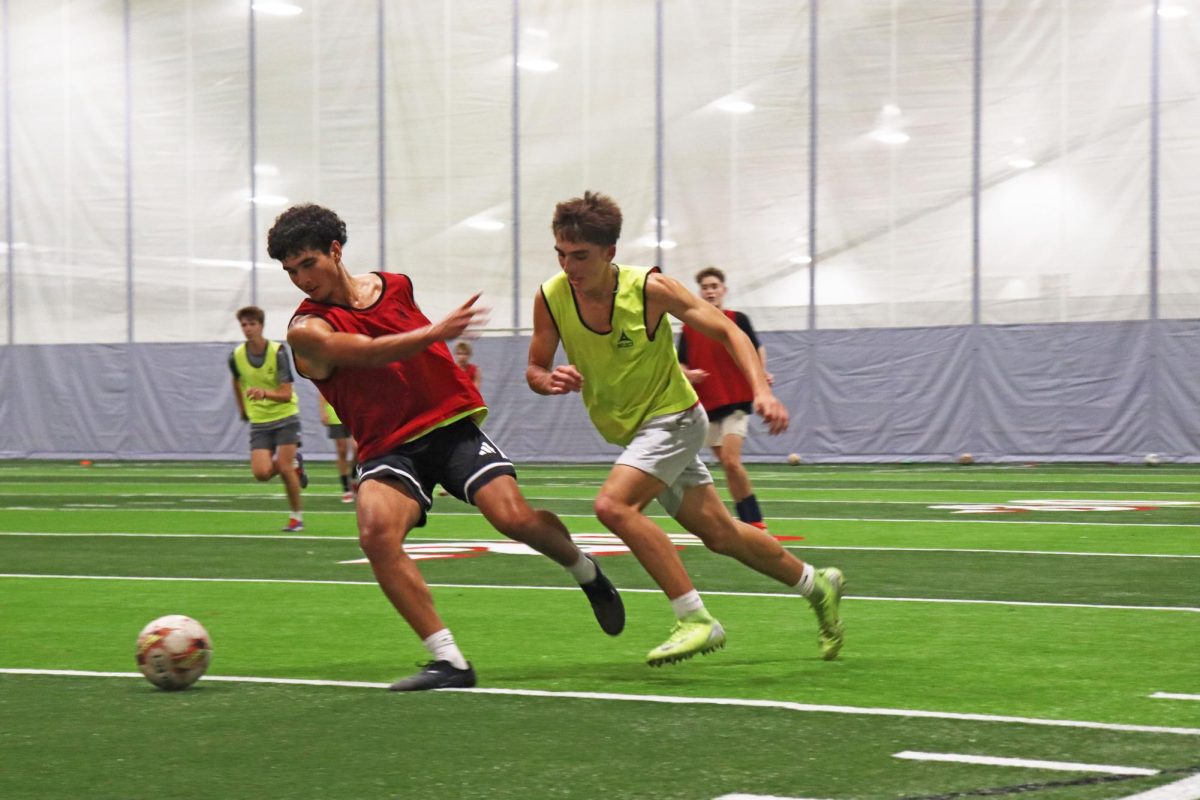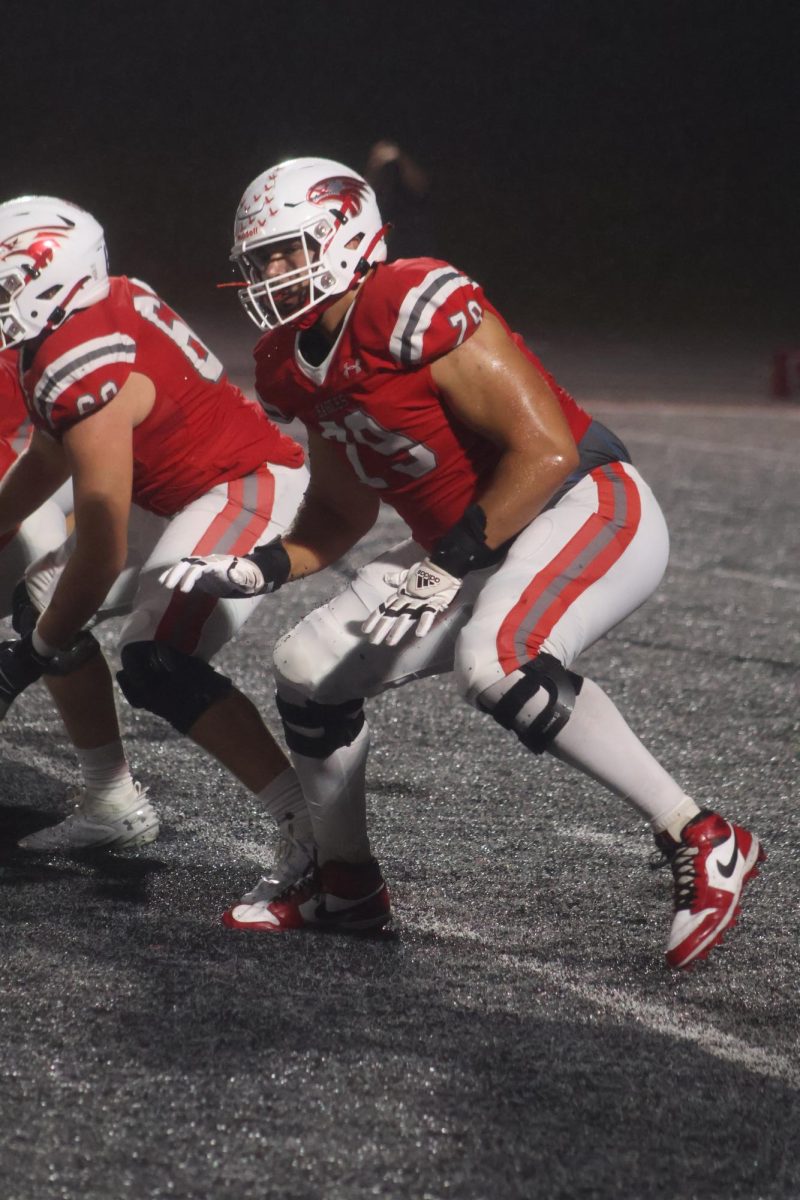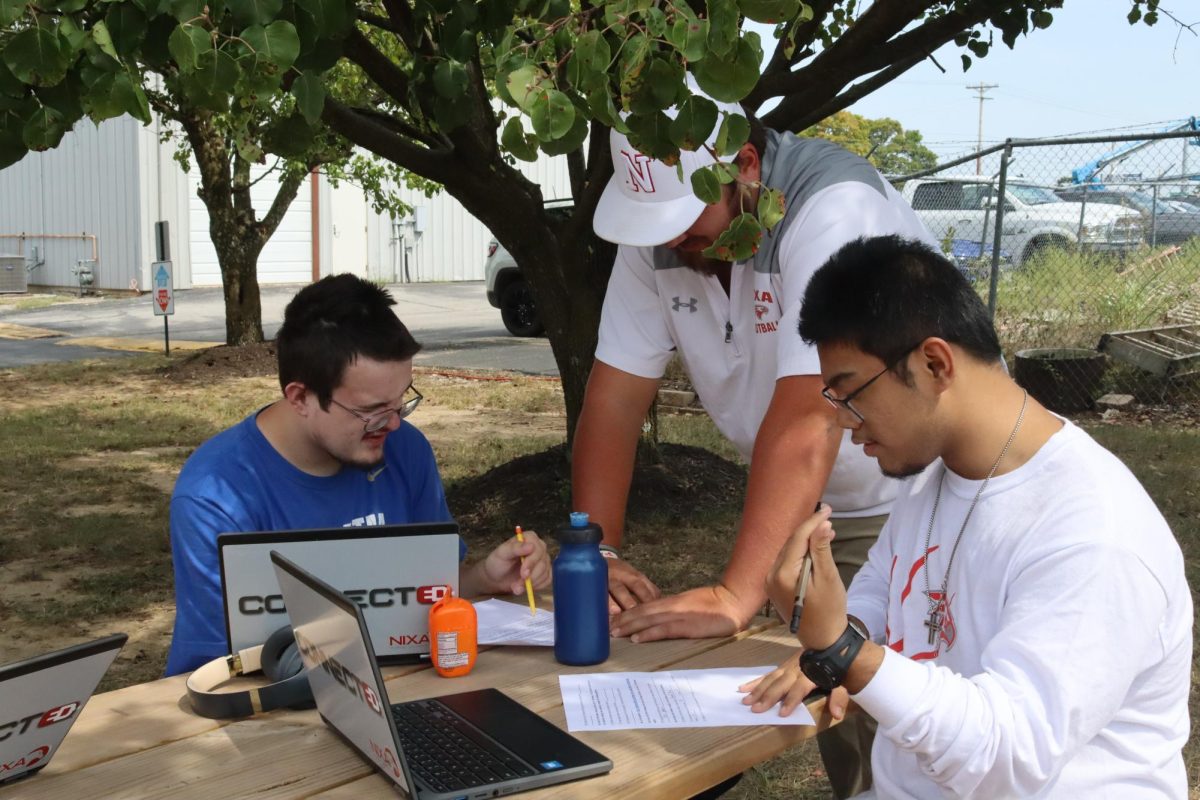Missouri is one of the states to join in on an unprecedented mid-decade congressional redistricting. Missouri lawmakers changed the district voting maps with the goal of giving Republicans an advantage in races for Congress. Gov. Mike Kehoe signed a new law on Sep. 28 that divides Missouri’s 5th congressional The terms “redistricting” and “gerrymandering”are related. University of Missouri-Kansas City Associate Professor of Political Science Greg Vonnahme said gerrymandering is a form of redistricting.
“Each state has a certain number of districts, so in Missouri, we have 8 districts,” Vonnahme said,” Each district represents around 700 to 800,000 people. As people move around, we change the district boundaries to keep the populations about the same. Partisan gerrymandering refers to using the redistricting process to create a political advantage, either for Republicans or Democrats.”
Advanced placement government and politics teacher George Villanueva said that whichever party is primarily controlling a state, they tend to support redistricting.
“If you’re in power, you’re fine with it,” Villanueva said, “The politicians are doing nothing legally wrong. That’s the problem with gerrymandering. Is it lawful? Yes. Is it equitable? I would argue no, most of the time, because if you were a Republican sitting in California, you wouldn’t like it at all. But a Republican sitting in Missouri, you’d have no problem with it.”
People argue that Kehoe is doing this to remove Democratic Representative Emanuel Cleaver’s district, which skeptics claim is the textbook definition of gerrymandering. The usage of gerrymandering has sparked controversy and discourse about why lawmakers use it.
“For partisan gerrymandering, the motive is to build in as much of a political advantage for your side as you possibly can,” University of Missouri-Kansas City Assistant Professor of Political Science Greg Vonnahme said. “If you’re a Republican or you’re a Democrat, you want as many pretty comfortable Democratic districts, or as many politically comfortable Republican districts as you can create, and you want to minimize your opponent’s chances of picking up districts.”
With gerrymandering appearing in media coverage more over the past several months, people have found issues and criticisms with it. Advanced Placement government and politics teacher George Villanueva said gerrymandering can affect people’s drive to vote.
“The biggest problem with gerrymandering is to silence the votes of the people,” Villanueva said. “It can disenfranchise people.”
Due to the controversial nature of mid-decade gerrymandering, there has been push back by several activist groups in Missouri. Nautica Franken is a part of the Young Communist League-Springfield, Missouri, one of the activist organizations across Missouri that protested on Sept. 10 in Jefferson City against the gerrymandering bill.
“I attended the protest because I love this state and I believe we all deserve a fair chance with our vote, “Franken said. “Politicians we elect to represent us should be working for us. They should not be working at the behest of, out of state, political administrations.”
During the protest, Missouri Democrats enacted the filibuster, where a member of the legislature delays a law, bill or resolution for said legislation to either be delayed on passing or abandoned altogether.
“The energy was high,” Franken said.” It went on for a few hours. There were thousands of protesters deep in the Capitol building, chanting and shouting with their signs over their heads. There were several speakers that gave powerful speeches. I was one of many to enter the gallery above the Senate floor to witness the Democrat filibuster.”
While mid-decade redistricting is a rare occasion, states commonly redistrict once a decade based on updated census figures.
“What has been required is that states engage in redistricting after the U.S. Census is completed,” Aric Gooch, assistant political science professor at Missouri State University, said. “That happens every 10 years, that is when we see states engage in redistricting, kind of across the United States, that is the norm.”
Many have questioned the legality of gerrymandering, Gooch said. The Missouri Constitution, under Article III, Section 45, references redistricting. But it is unclear about the legality of mid-decade redistricting, with both Republicans and Democrats having their own opposing viewpoints on its interpretation.
“This interesting opportunity for the Missouri Constitution to be interpreted to try to determine whether it’s allowed or not by our state constitution,” Gooch said. “There are those in the state legislature of Missouri who argue on the floor that, because it says the legislature shall engage in redistricting after the census. It’s not an explicit proof like [a] provision against engaging in mid-decade redistricting, so it’s fully constitutional. … However, another section of the Missouri Constitution that has to deal with state legislative redistricting in a in a previous court case, Missouri state-level court case from the 1950s interpreted the ‘shall’ language of a previous provision on state legislative redistricting that actually went the opposite, that would come to the opposite conclusion [for mid-decade redistricting to not be permitted].”
Since the redistricting bill will primarily benefit Missouri Republicans, Democrats in Missouri pushed against the bill from passing. Vonnahme said Democrats plan to challenge the proposed redistricting map by collecting enough signatures to force a statewide election on the matter that would block the maps from being used in the 2026 Midterm Election.
“Democrats are planning on launching a referendum campaign against the redistricting plan,” Vonnahme said. “The first step is they’ll need about 100,000 signatures, is about the threshold. That’s not super high. … This is a 5 percent signature threshold. If it qualifies for the ballot, it suspends the law until there’s an election.”
How Gerrymandering Works
The terms “redistricting” and “gerrymandering”are related. University of Missouri-Kansas City Associate Professor of Political Science Greg Vonnahme said gerrymandering is a form of redistricting.
“Each state has a certain number of districts, so in Missouri, we have 8 districts,” Vonnahme said,” Each district represents around 700 to 800,000 people. As people move around, we change the district boundaries to keep the populations about the same. Partisan gerrymandering refers to using the redistricting process to create a political advantage, either for Republicans or Democrats.”
Advanced placement government and politics teacher George Villanueva said that whichever party is primarily controlling a state, they tend to support redistricting.
“If you’re in power, you’re fine with it,” Villanueva said, “The politicians are doing nothing legally wrong. That’s the problem with gerrymandering. Is it lawful? Yes. Is it equitable? I would argue no, most of the time, because if you were a Republican sitting in California, you wouldn’t like it at all. But a Republican sitting in Missouri, you’d have no problem with it.”




